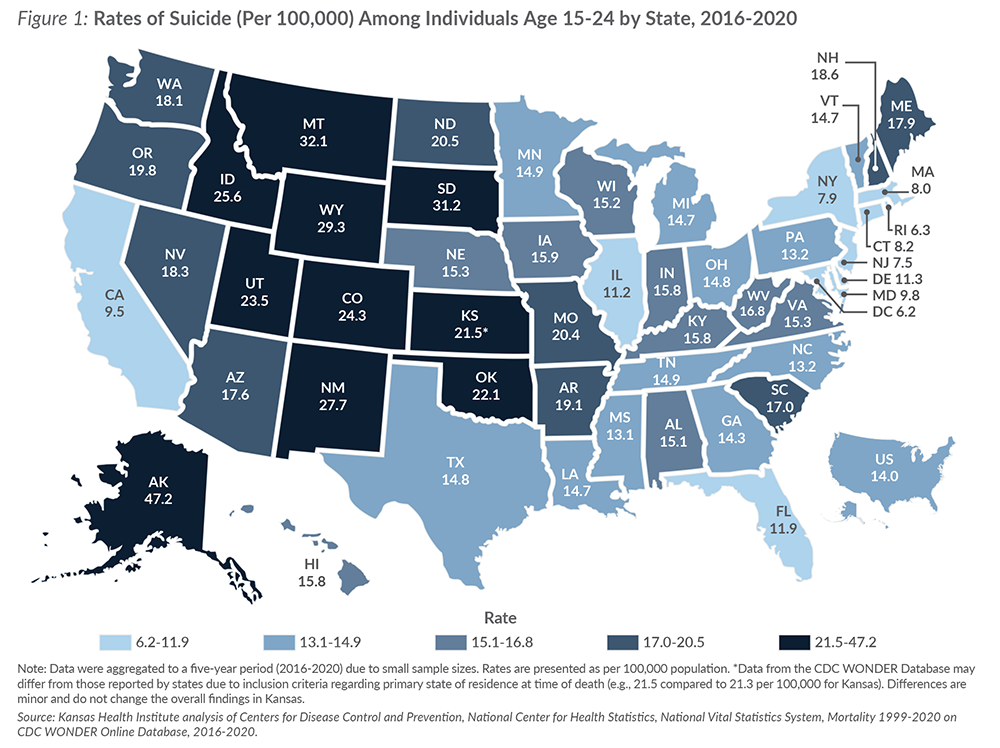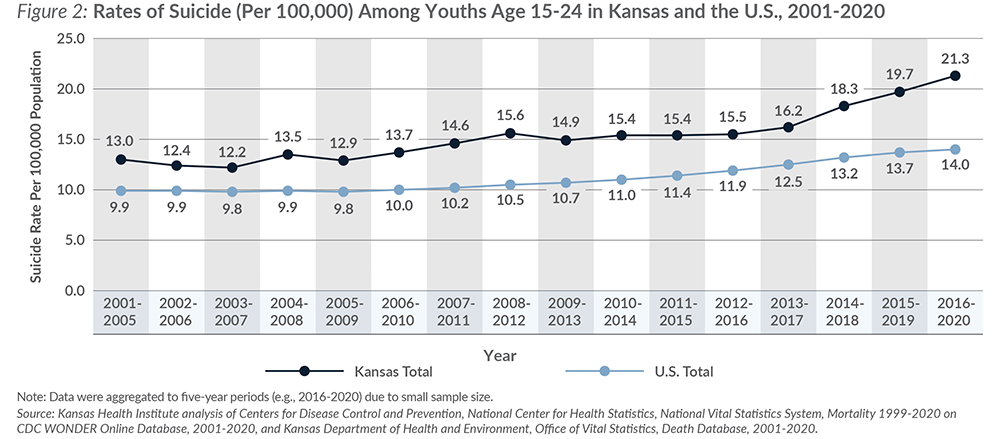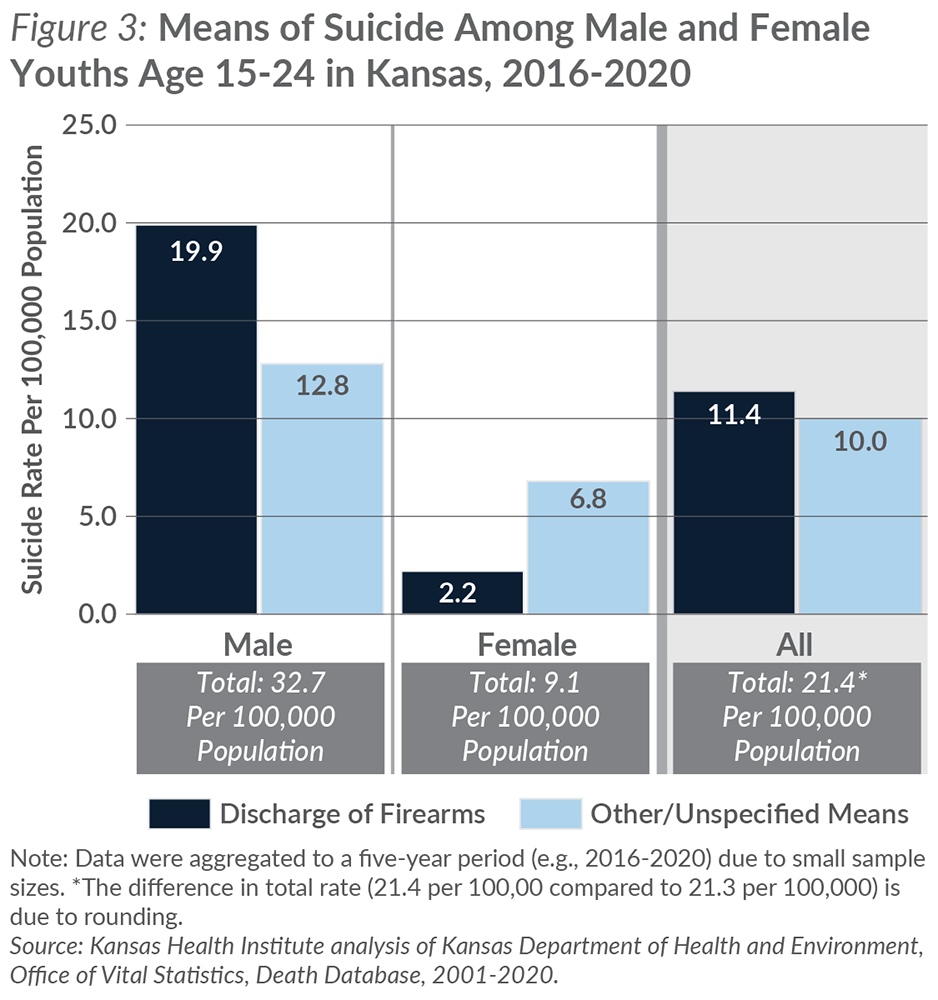Key Points
- Kansas had the 10th highest suicide rate in the nation for youths age 15-24 and the 11th highest for early adolescents age 10-14 in 2016-2020.
- Suicide was the second leading cause of death for Kansas early adolescents age 10-14 and youths age 15-24 in 2016-2020.
- The Kansas youth suicide rate increased 63.8 percent, from 13.0 per 100,000 population in 2001-2005, to 21.3 per 100,000 in 2016-2020, which outpaced the 41.1 percent increase in the U.S. overall (9.9 to 14.0 per 100,000).
- Six in 10 (60.9 percent) male youths who died by suicide in 2016-2020 died by discharge of firearms, while firearms accounted for a quarter (24.2 percent) of female youth suicides in the same period.




